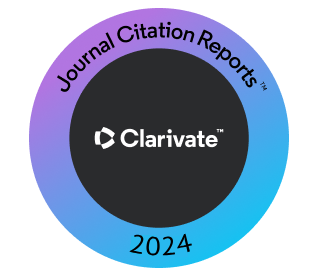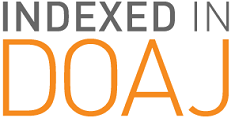Extraction of Nickel Oxide from Spent Catalyst for Environmentally Safe Disposal
Abstract
Molecular sieves are used in various industries, especially petroleum and gas processing plants, as catalysts. These materials are in contact with crude oil products. After several operational years, these materials’ activities were reduced to a nonfeasible level called spent molecular sieve. Tens of tons are disposed of annually from oil and gas companies in Iraq. The paper aims to determine the kinds and amounts of toxic materials carried by the nickel oxide sulfur bed spent catalyst and then submit the suitable treatment methods, such as leaching by water, base solution, and acid solution. Aradioactive test was first done to ensure the material was free from the radioactivity array. The material was tested for nickel oxide concentration after each step of treatment. It was found that the leaching by water reduces the content by 4.5% during 24 h of leaching and 15.5% after 7 days. The leaching by alkaline sodium hydroxide 10% concentration solution reduces the content by 7% during 24 h and 14.3% after 7 days. The 10% hydrochloric acid concentration solution leaching reduces the nickel content by 10.8 during 24 h and 65.7 after 7 days. Leaching by acid solution is more efficient in the extraction of nickel oxide. The treatment method novelty is to be carried out at reasonable temperatures with high metal extraction efficiency. The research results achieved this goal of attaining extraction at an easily achievable temperature of 70°C with a relatively good extraction rate higher than 65%.
Downloads
References
Abu Bakar, W.W., Othman, Y., Young, R.A., and Toemen, S., 2009. The investigation of active sites on nickel oxide based catalysts towards the in-situ reactions of methanation and desulfurization. Modern Applied Science, 3(2), pp.35-43.
Aras, A., and Ağaçayak, T., 2017. Optimization of nickel extraction from lateritic ore in hydrochloric acid. Selcuk University Journal of Engineering Sciences, 5(3), pp.341-352.
Banerjee, D., Ganeshan, R., Rao, N., and Kumar, A., 2022. Novel analytical method for quality control of molecular sieves at manufacturing sites. Research Journal of Material Science, 10(1), pp.21-24.
Cano, J.R., Zamarripa, G.G.,Pedroza, F.R., Aguilar, M.D., Macías, A.H., and Vielma, A.C., 2016. Kinetics and statistical analysis of nickel leaching from spent catalyst in nitric acid solution. International Journal of Mineral Processing, 148, pp.41-47.
EPA. 2024. Resource Conservation and Recovery Act (RCRA) Regulations. EPA, USA. Faris, N., Pownceby, M.I., Bruckard, W.J., and Chen, M., 2022. The direct leaching of nickel sulfide flotation concentrates-a historic and state-of-the-art review Part I: Piloted processes and commercial operations. Mineral Processing and Extractive Metallurgy Review, 44(6), pp.407-435.
Flanigen, E.M., editor. 2001. Zeolites and molecular sieves: An historical perspective. In: Studies in Surface Science and Catalysis. Vol. 137., Ch. 2. Elsevier, Amsterdam, pp.11-35.
Gleichmann, K., Unger, B., and Brandt, A., 2016. Industrial Zeolite Molecular Sieves, Claudia Belviso. In: Zeolites-Useful Minerals. Claudia Belviso, Germany. Mafra, L., and Klinowski, J., 2013. Molecular sieves: Crystalline systems. In:
Harris, R.K., Wasylishen, R., editors. Encyclopedia of Magnetic Resonance. Vol. 2. Wiley, United States, pp.89-108.
Marafi, M., and Ran, M.S., 2017. Refinery waste: The spent hydroprocessing catalyst and their metal recovery. International Journal of Energy and Environmental Engineering, 11(10), pp.918-922.
Marafi, M., and Stanislaus, A., 2003. Options and processes for spent catalyst Handling and Utilization. Journal of Hazards Materials, 101(2), pp.123-132.
Meier, W.M., and Uytterhoeven, J.B., 1973. Molecular sieves. Gould, R.F., editor. Advances in Chemistry Series. American Chemical Society, Belgium.
Miazga, B., and Mulak, W., 2008. Leaching of nickel from sent catalysts. Physicochemical Problems of Mineral Processing, 42, pp.177-184.
Naydenov, V., 2003. Structured Molecular Sieves. Doctoral Thesis. Luleå University of Technology, Luleå, Sweden. Oza, R., and Patel, S., 2012. Recovery of nickel from spent Ni/Al2O3 catalysts using acid leaching, chelation and ultrasonication. Research Journal of Recent Sciences, 1, pp.434-443.
Petrov, L., 2002. Problems and challenges about accelarated testing of the catalytic activity of catalysts. In: Derouane, E.G., Parmon, V., Lemos, F., and Ribeior, F.R., Eds. Principles and Methods for Accelerated Catalyst Design and Testing. Vol. 69. Springer Nature, Bulgaria, pp.13-69.
Reguigui, N., 2014. Gamma Ray Spectrometry Practical Information. International Atomic Energy Agency (IAEA), Austria. Rezaei, S., 2015. Novel Adsorbents for Acid Gas Treatment in Process Streams. Doctoral Thesis. University of Alberta, Canada.
Smail, J.M., Ahmad, S.T., and Mansour, H.H., 2021. Estimation of the natural radioactivity levels in the soil along the Little Zab River, Kurdistan Region in Iraq. Journal of Radioanalytical and Nuclear Chemistry, 331, pp.119-128.
Zangana, M.H., Ibraheem, F.H., Khaleel, S.I., and Al-Dahhan, M.H., 2017. Recycling of spent Molecular Sieves from Oil and GAS Industry: North Gas Company As a Case Study. IEEE, Iraq
Copyright (c) 2025 Fakhri H. Ibraheem, Heavn E. Mahmood, Dunya I. Salih, Jafar M. Smil, Hawbash S. Ahamad, Fatin A. Salih

This work is licensed under a Creative Commons Attribution-NonCommercial-ShareAlike 4.0 International License.
Authors who choose to publish their work with Aro agree to the following terms:
-
Authors retain the copyright to their work and grant the journal the right of first publication. The work is simultaneously licensed under a Creative Commons Attribution License [CC BY-NC-SA 4.0]. This license allows others to share the work with an acknowledgement of the work's authorship and initial publication in this journal.
-
Authors have the freedom to enter into separate agreements for the non-exclusive distribution of the journal's published version of the work. This includes options such as posting it to an institutional repository or publishing it in a book, as long as proper acknowledgement is given to its initial publication in this journal.
-
Authors are encouraged to share and post their work online, including in institutional repositories or on their personal websites, both prior to and during the submission process. This practice can lead to productive exchanges and increase the visibility and citation of the published work.
By agreeing to these terms, authors acknowledge the importance of open access and the benefits it brings to the scholarly community.













 ARO Journal is a scientific, peer-reviewed, periodical, and OAJ that has no APC or ASC.
ARO Journal is a scientific, peer-reviewed, periodical, and OAJ that has no APC or ASC.